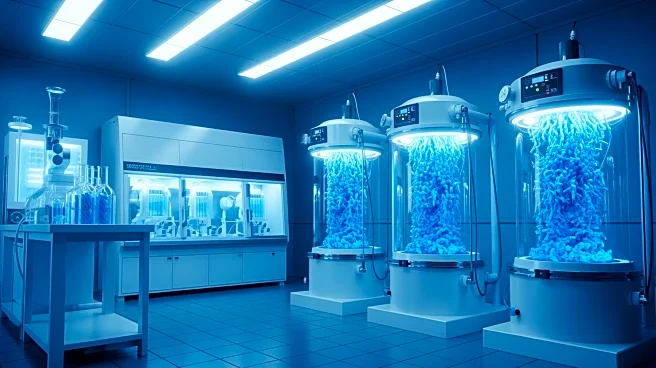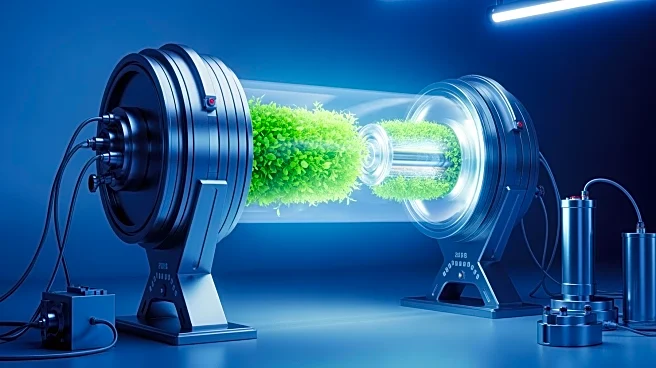What's Happening?
Researchers at UC San Diego have successfully bioengineered bacteria to produce xanthommatin, a pigment found in cephalopods like octopuses, which is responsible for their color-changing abilities. This
breakthrough was achieved by genetically modifying bacteria to produce the pigment in large quantities, up to 1,000 times more than previous methods. The team used a technique called 'growth-coupled biosynthesis,' which links the bacteria's survival to the production of xanthommatin, ensuring high yields. This development not only advances the study of cephalopod camouflage but also demonstrates the potential of microbial manufacturing for producing valuable compounds.
Why It's Important?
The ability to mass-produce xanthommatin could significantly enhance research into cephalopod camouflage, potentially leading to new insights and applications in various fields, including materials science and military technology. Moreover, this study highlights the broader potential of microbial manufacturing, which could revolutionize industrial practices by enabling the sustainable production of valuable compounds. This approach could lead to more efficient and environmentally friendly manufacturing processes, benefiting industries that rely on chemical production.












